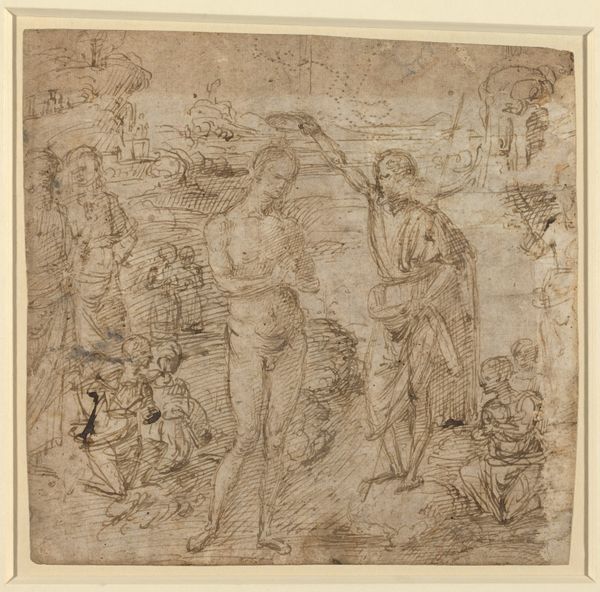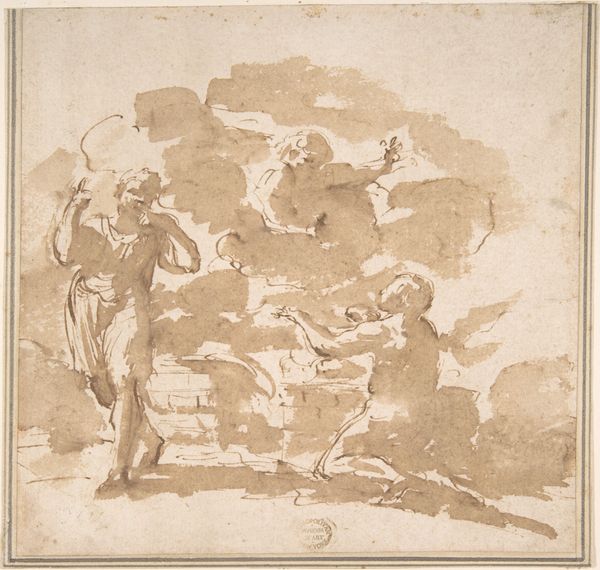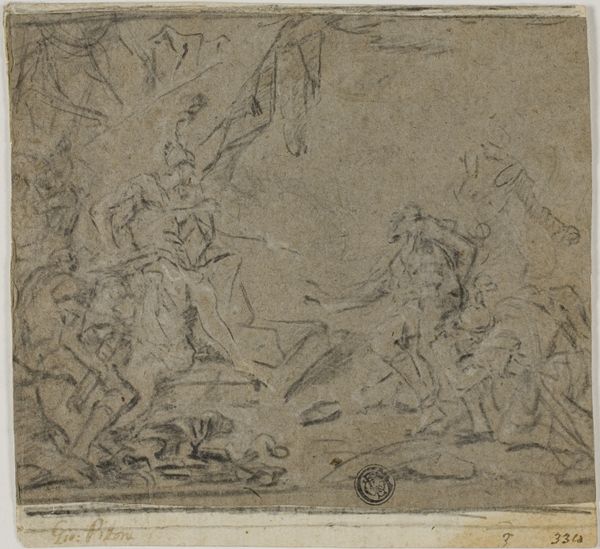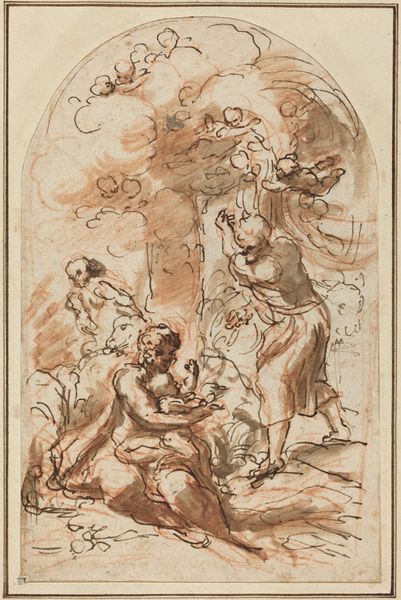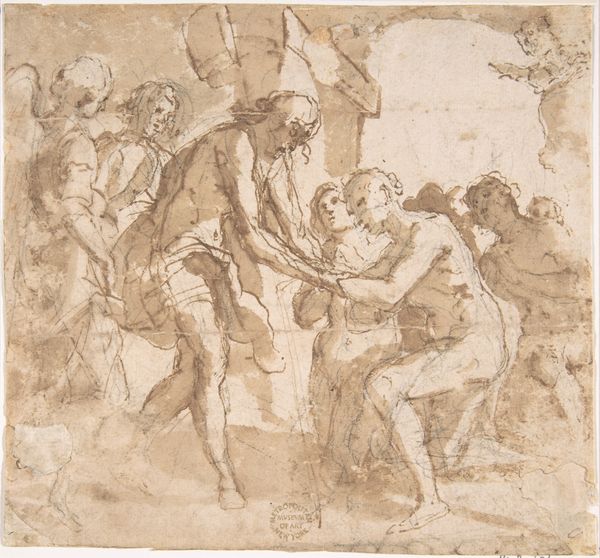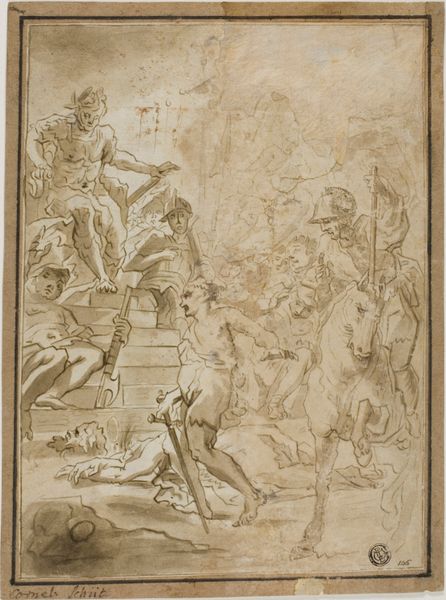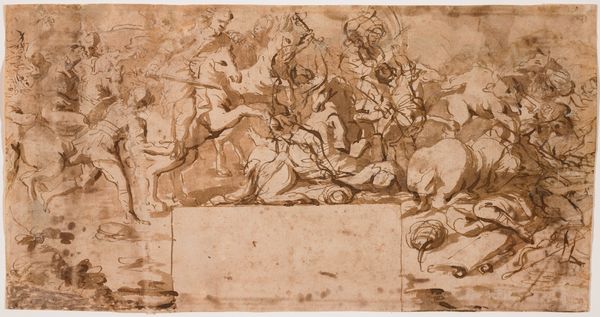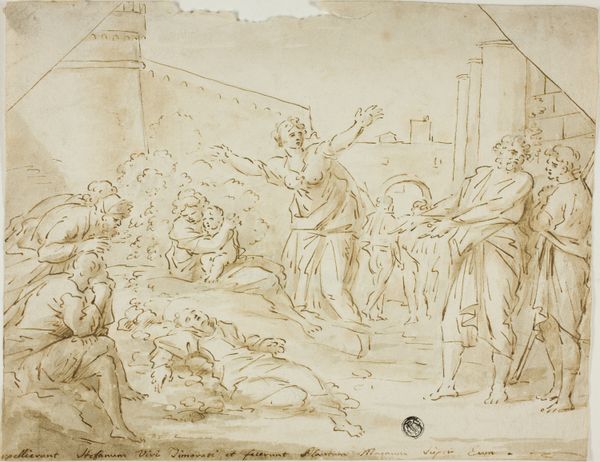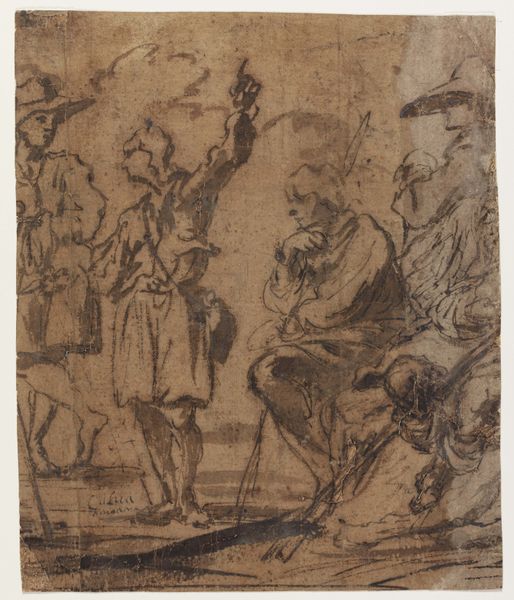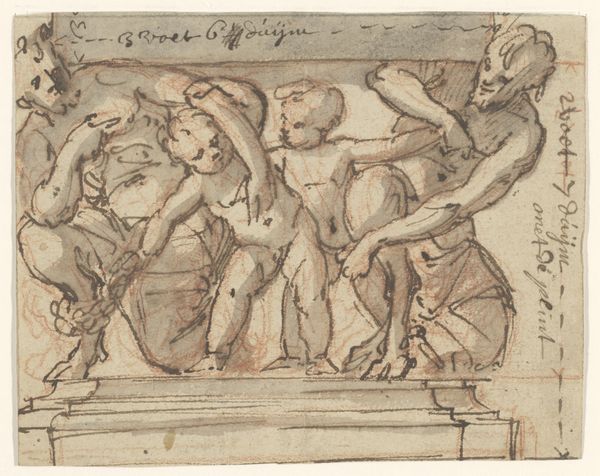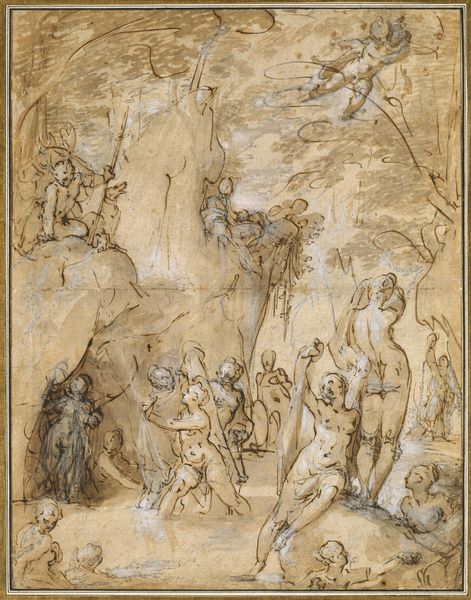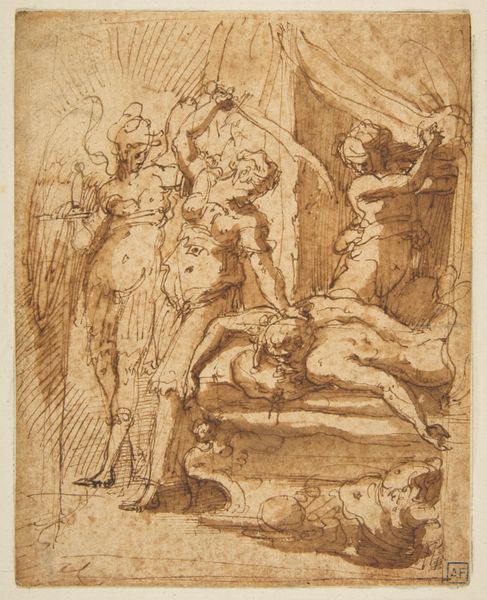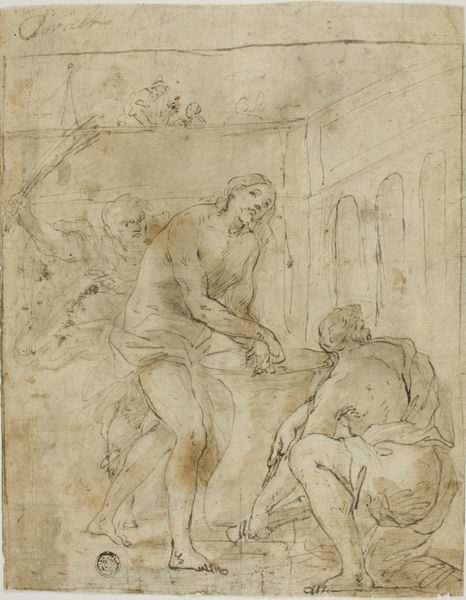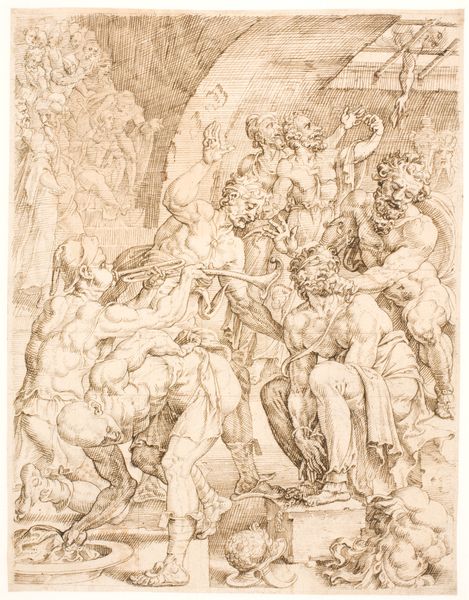
drawing
#
drawing
#
baroque
#
figuration
#
history-painting
Copyright: Public Domain: Artvee
Curator: Here we have Sebastiano Ricci’s "The Death of Seneca," a drawing dating back to 1705. Editor: The monochromatic brown wash lends it such a feeling of antiquity. Seneca looks almost sculpted, but the surrounding figures are looser, sketchier. It really directs your eye to the central drama. Curator: Ricci was a Venetian painter known for his role in the late Baroque movement. Seneca's demise, forced to commit suicide by Emperor Nero, was a popular subject, ripe with political and philosophical implications. Editor: It is intriguing how Ricci approached it as a drawing. You can sense his hand and choices so clearly. Look at the hasty lines of the architecture—compare that to the body of Seneca, perched on what looks like an ornate tub. It creates a real sense of texture. I am curious about the paper itself. Was it prepared in a certain way? The ink? These choices amplify the final result. Curator: Certainly, the drawing medium lends itself to immediacy. Ricci would have been aware of the interpretations of Seneca in broader culture, like those adopted in salons, as the noble stoic defying tyranny through self-sacrifice, influencing Enlightenment thought. His suicide became a symbol of resistance against autocratic rule, quite potent considering the politics of the time and place. Editor: It does feel rebellious in its construction. This drawing rejects slickness, highlighting the artist's process. Consider how the tools – pen, ink, paper – become instruments of production in this moment of artistic decision-making and physical labor. This work provides insight into not just what is represented, but how the artistic process gives meaning. Curator: Absolutely. Thinking about the historical perspective, works like this offered commentary on power and resistance within established social structures. This image was disseminated, carrying with it implications about Nero’s despotic leadership and the importance of personal conviction, impacting sociopolitical ideas and movements. Editor: Thinking about the materiality offers a crucial insight, moving past surface interpretation toward revealing intrinsic elements connecting artist to culture. Curator: Indeed. Understanding the artistic context of such historical and philosophical works helps clarify their intended impact within society. Editor: Looking at how the piece was crafted and came to life makes it all so much more visceral.
Comments
No comments
Be the first to comment and join the conversation on the ultimate creative platform.
